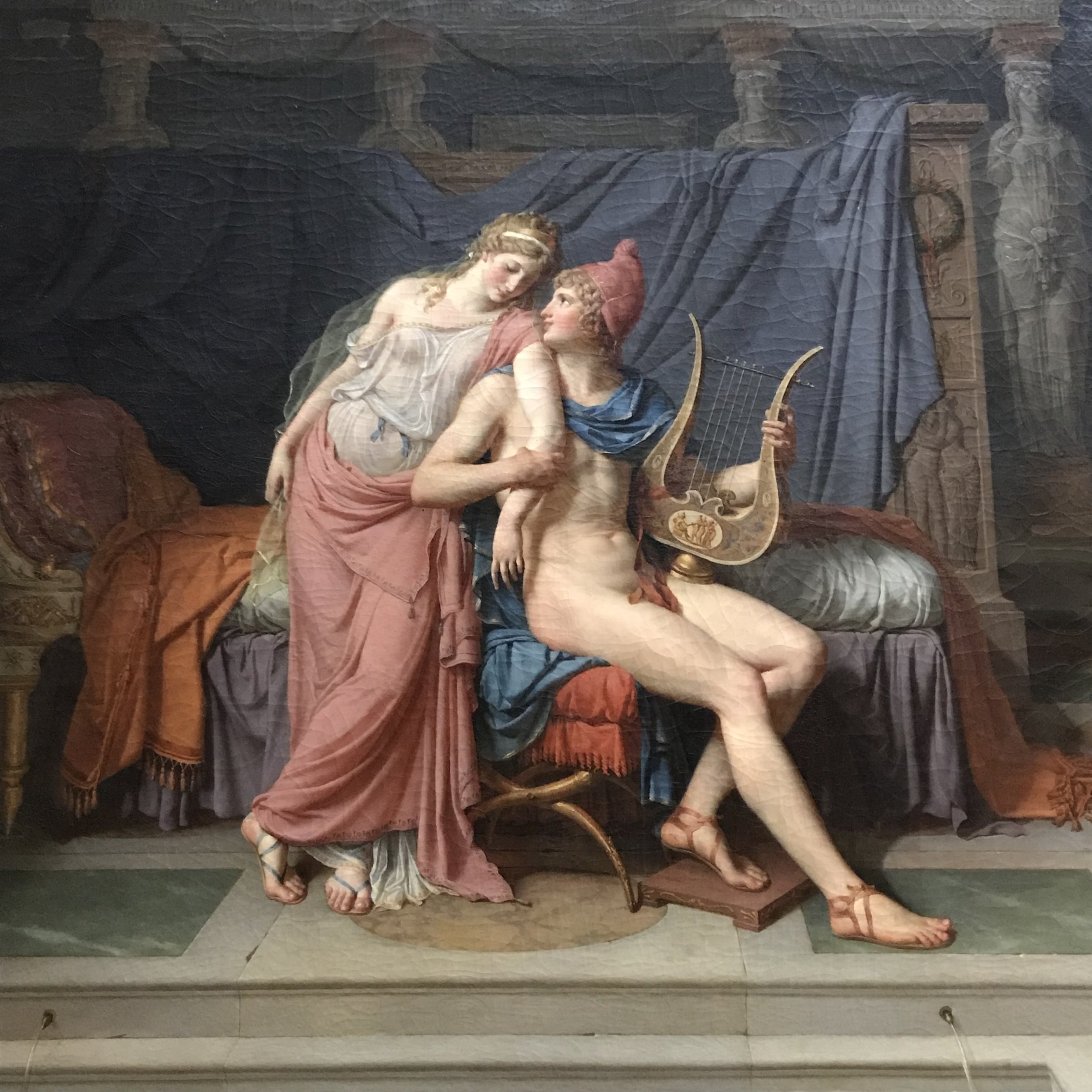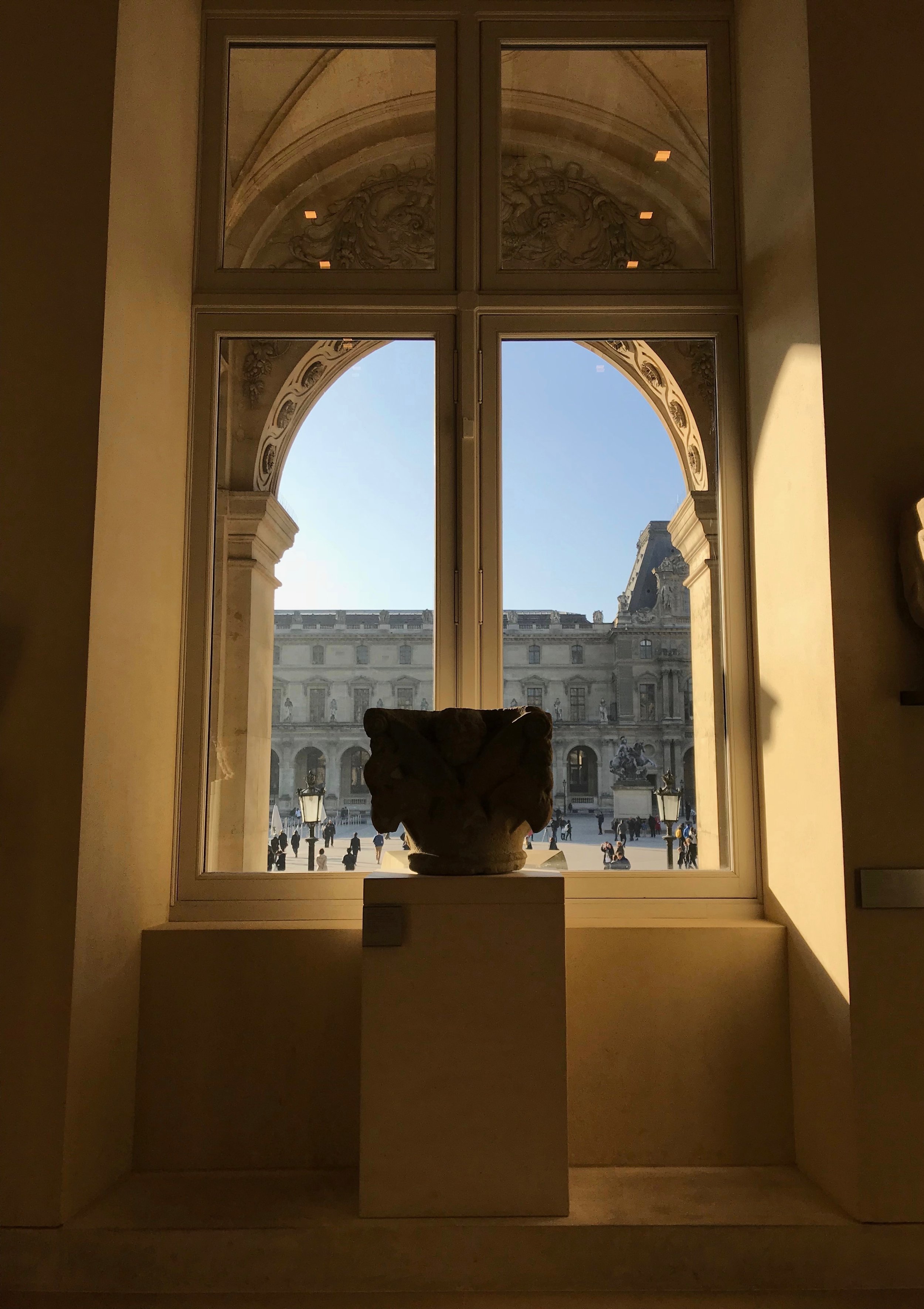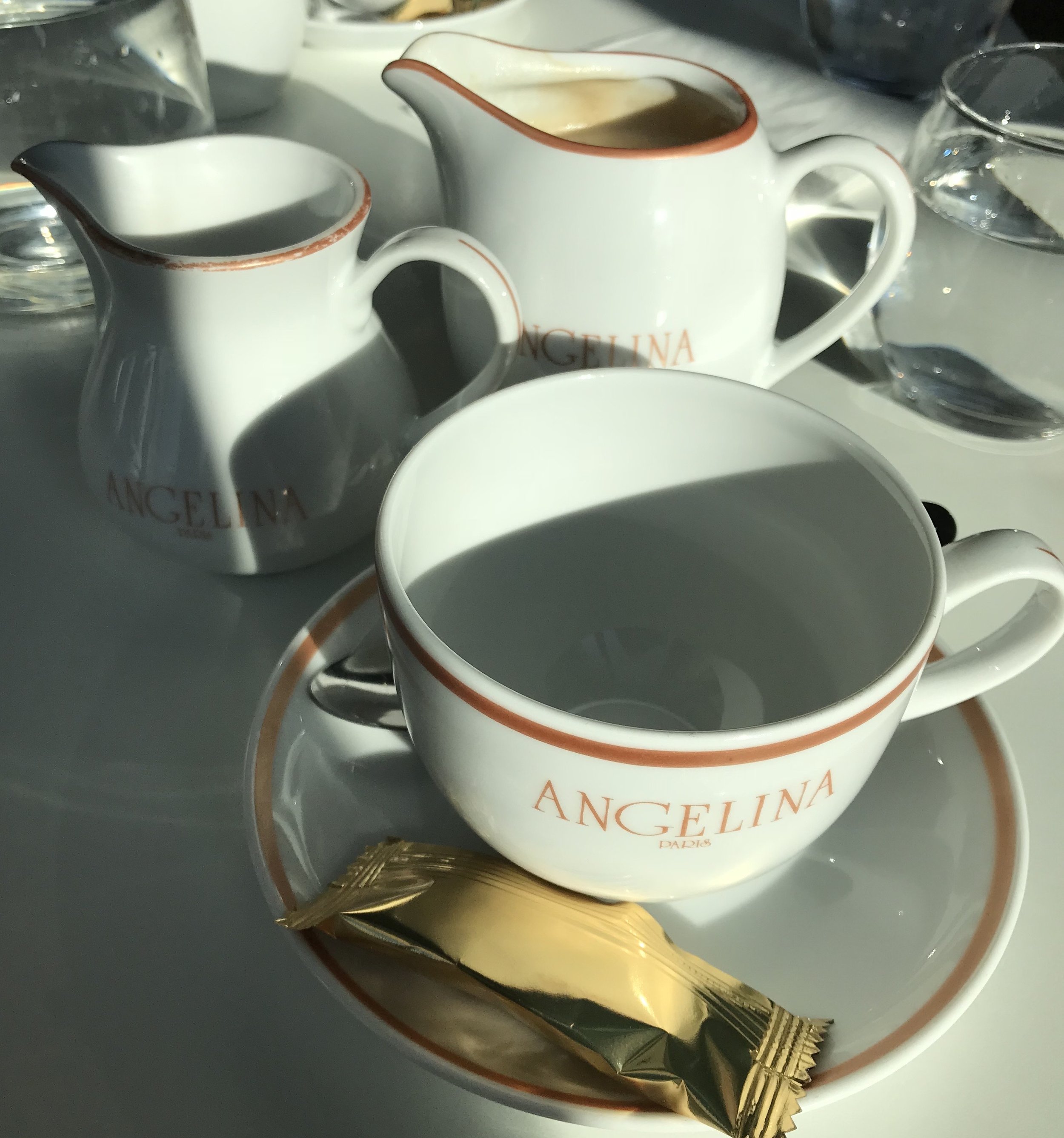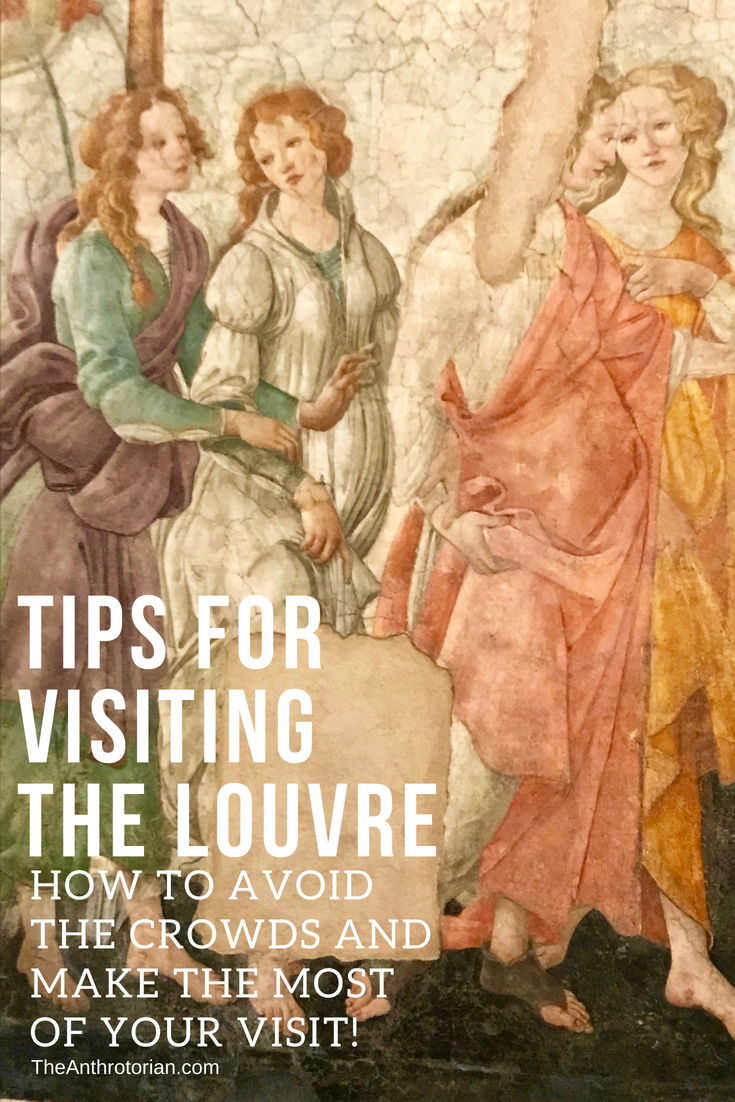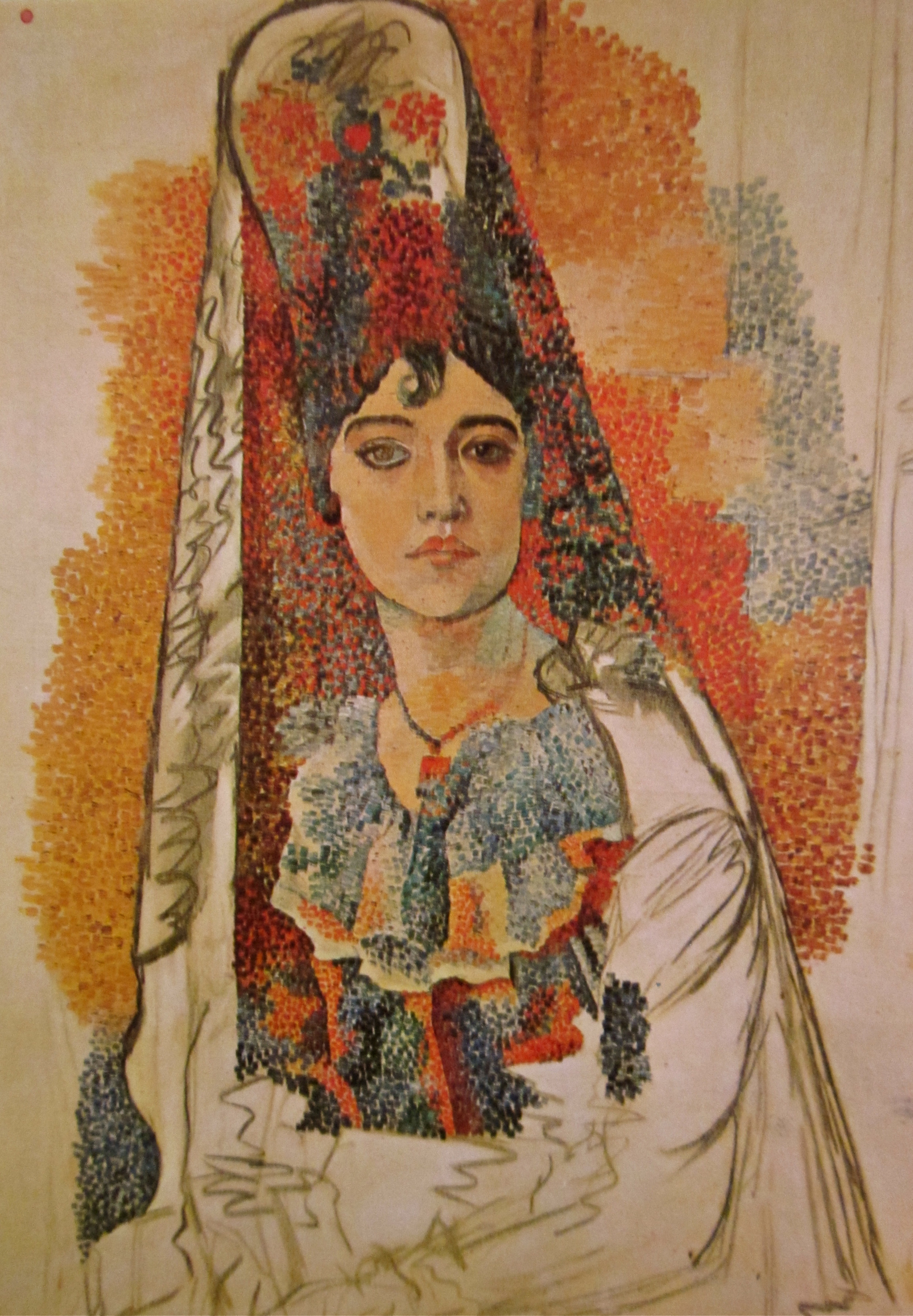Whether you are a super fan of art and history, or just want to say you've seen the Mona Lisa, a visit to the Louvre is a must-do if you are in Paris. This fortress turned palace turned gallery is now a massive, sprawling, and overwhelming collection of some of the most important pieces of human history.
Making the most of your trip definitely takes some planning — I've visited the museum twice, and still haven't come close to seeing everything!
First, let me tell you a little bit of the history of this famous museum (scroll down if you'd rather just read the tips!).
Construction on the Louvre began in 1190, but it wasn't a fancy palace.
At the time, it was located on the western edge of Paris, and it was built as a fortress to help protect the city. It had a moat and everything!
The city quickly grew, engulfing the fortress, and King Charles V decided to convert it into a royal residence in 1364. From then, until the present, the building has been in constant renovation with rulers like King Henri IV, King Louis XIV, and Napoleon Bonaparte all adding new buildings, wings, galleries, and elaborate decoration to the complex that they called home.
In 1692, artists began to hold shows in a few of the more public wings, and slowly, more and more of the buildings began to fill with art and artifacts from all over the world. By 1882, the majority of the Louvre had become a museum.
In 1939, during WWII, the museum works were evacuated, except for the largest pieces, and were hidden away all over the country. It re-opened while still under occupation in 1940.
Now, thousands ride the escalator beneath the controversial glass pyramid (built in 1989, many Parisians consider it to be an eyesore), to visit the masterpieces and walk in the footsteps of some of the most influential figures in European history.
Here are my top tips to help you plan your visit to the Louvre Museum.
Avoid visiting from June-August
The crowds will be overwhelming and you will have no chance of getting near, or being alone, with any of the art or artifacts.
Visit on the days that the museum is open late
The Louvre is open from 9 am — 9:00 pm on Wednesdays and Fridays (it closes at 6 pm on the other days).
If you can, plan to visit on one of the extended hour days. It will give you a chance to take in more, while still being able to leave the museum for fresh air and food breaks. Plus, once dinner time hits, there are far fewer people in the galleries. In fact, in my experience, the galleries are largely empty by 8 pm. At 8:45 pm, I found myself completely alone in the gallery that houses the Mona Lisa — it was incredible.
Choose your entrance
There are three entrances to the Louvre. Most people will head to the glass pyramid entrance because it is the flashiest, but you can also enter through Porte des Lions or the Galerie du Carrousel and they are usually not as busy.
Get a map
The first thing to do is pick up an info map (or you can check it out ahead of time here). The museum is huge, and you don't want to waste time wandering aimlessly.
Audio guides are your friend
There are audio guides that you can rent which are actually nice to have. They give you some really interesting information, and also block out the sound of the other visitors, making you feel a bit more immersed in the history that surrounds you.
Pick up postcards of your favorite pieces
You can take photos of EVERYTHING in the museum — yup, even the Mona Lisa — as long as you don't use your flash. The flash can damage the delicate pigments in paintings. Because of the damage that light can have on these works, low lighting doesn't make for the best photos.
While I understand that getting a blurry photo is still better than no photo, the gift shop has beautiful postcards of all of the major works which make great souvenirs.
There is a post-office on site as well if you want to mail any postcards to friends back home.
Free coat check!
There is a free cloakroom and luggage room if you have anything that you want to check, but they won't take bags larger than what you could carry on a plane.
Plan your meals
While there are lovely cafes and restaurants in the Louvre to enjoy (I highly recommend Café Richelieu pictured below), in the gardens just outside, and nearby, the prices are really jacked up.
If you are on a budget, I suggest bringing some snacks with you, or walking a few streets away to find a more inexpensive spot. If you are willing to splurge a little, lunch is usually about half the price as dinner, and most spots will have inexpensive sandwiches for all meals. The gardens just outside the palace are the perfect place to have a picnic!
Watch out for pickpockets
Sadly, they target the Louvre, as tourists are so enthralled by what they are seeing they usually aren't paying attention to their bags.
Take your time
Try not to just run from one masterpiece to another. Soak in where you are. Pay attention to the incredibly sculpted and painted ceilings, visit a gallery that doesn't have a famous work in it, explore — I promise you won't regret it!
Pin Me!
Meet The Author
Lindsay Shapka is an avid traveler and the creator of The Anthrotorian — a website dedicated to sharing travel tips, stories about adventures, culture quirks, artists you should know, fascinating bits of history, and more!
She is also an artist, marketing specialist, editor, and freelance writer who has work featured on websites, blogs, and in magazines like National Geographic Traveler.
